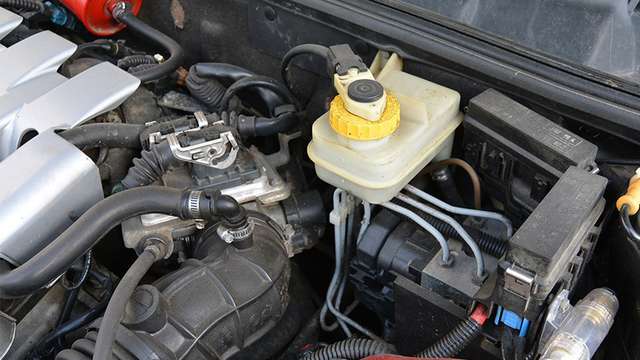- brakes
Does brake fluid need to be changed?

Updated 9 Oct 2019
Jason Unrau

Your car’s third birthday just passed, and you know what that means: your bumper-to-bumper warranty is over, and there’s going to be more maintenance and repairs in your future.
For most car owners, it’s the interval when you’ll be due for your car’s first brake fluid change.
You might be tempted to brush it off as one of those services that isn’t really necessary - something a service guy made up to make a few extra bucks, like ‘topping up the headlight fluid’.
Brake fluid service is a real AND necessary maintenance item.
Its purpose is to keep your brakes working as designed.
This is why your brake fluid change is important and how it’s done.
Why a Brake Fluid Change is So Important
Hygroscopic
– adjective
hy·gro·scop·ic | \ ˌhī-grə-ˈskä-pik - readily taking up and retaining moisture
That’s now the Miriam-Webster dictionary describes ‘hygroscopic’.
That chemistry term is crucial to understanding why brake fluid needs to be changed.
Brake fluid is hygroscopic, absorbing moisture that forms in your car’s hydraulic brake system.
The process of heating and cooling forms water particles in the system.
Brake fluid’s chemical composition allows it to form bonds to the water molecules.
There’s a tipping point, though, where brake fluid has absorbed all it can take.
When it’s over-saturated, it begins to look milky, but that’s already past the point where it’s ineffective.
You’ll already be experiencing problems from it.
Symptoms of too much moisture in the brake system include:
Spongy brakes when the pedal is pressed
A hard brake pedal when trying to stop
Corrosion and premature failure for brake components from the inside out.
Fortunately, preventative maintenance will help you avoid these problems.
How a Brake Fluid Change is Performed
It’s a straightforward procedure if you have the right equipment on hand.
A mechanic lifts your car off the ground to gain access to the brake callipers or, for drum brakes, the wheel cylinders.
The bleeder screws are opened at each wheel, one by one, letting the brake fluid run out.
All the while, clean brake fluid from a new, previously unopened container is added to the reservoir on the brake cylinder, preventing air from getting into the brake lines and hoses.
When clean fluid can be seen coming from the bleeder screw at each wheel, it’s tightened.
The service is complete when clean fluid has come through at all four wheels.
How Often Does a Brake Fluid Change Need to be Done?
To be safe, brake fluid is scheduled to be changed approximately every 40,000 to 60,000km, or every three years for most models.
You’ll also want to replace the brake fluid after work on the brake lines or hoses.
Or, if the brake fluid has been contaminated by any other fluid at all, it must be flushed out.
If you’re due for a Brake Fluid change, be sure to book yourself in with a high-quality local mechanic through AutoGuru.
It’s quick, easy and completely online!

Written By
Jason Unrau
Jason is a Canadian automotive content writer with a background in the auto service industry, but he’s been hooked on cars and mechanics since childhood.
One of his first cars was an ’80 Mazda RX-7 that’s sorely missed to this day. A ’68 Ford Torino GT, a ’66 Ford Country Squire Woodie station wagon, and a ’96 Suzuki GSX-R 750 have spent time in his fleet of cars, bikes, and trucks over the past two decades.
Jason’s pride and joy is under construction – a turbocharged ’88 Mazda RX-7 convertible. Also on his resume is CASCAR official certification.